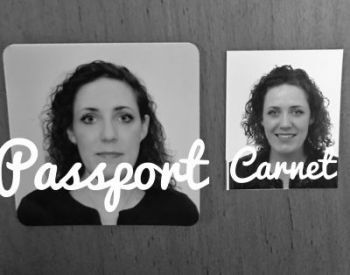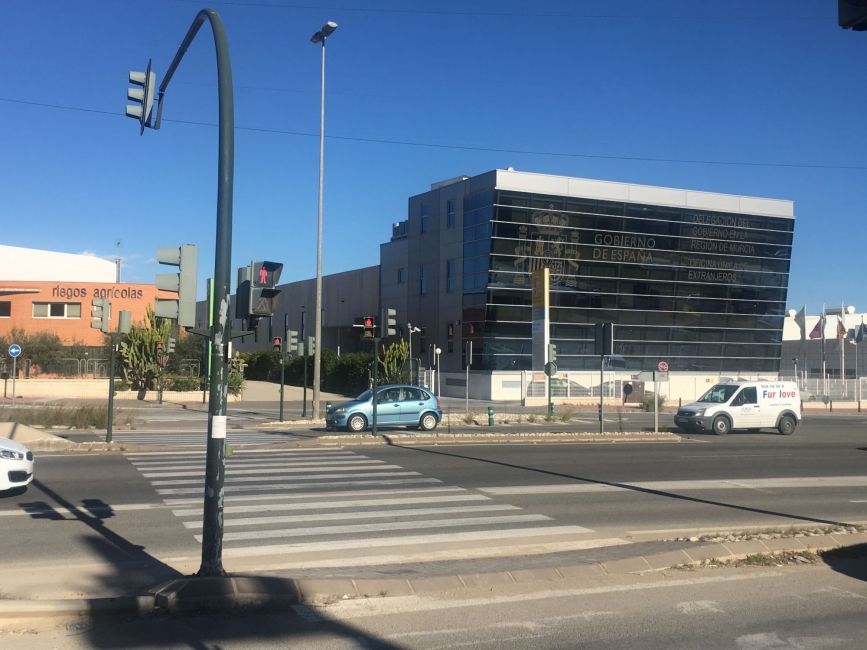Applying For the TIE as a US Citizen In Spain
Successfully applying for the TIE (Tarjeta de Identidad de Extranjero) is one of the most important paperwork things to do in Spain if you are staying longer than 3 months.
Before I dive in, however, there are a few things to keep in mind:
- Spain’s government is very de-centralized, so every region of Spain operates a little differently. These are my experiences at the Extranjería in Murcia.
- Even within a region, there’s a lot of inconsistency. Many people I’ve talked to -- even people working the same program in the same city -- have had very different experiences. This is my particular experience, and I’m hoping that sharing it will help smooth the ride for those coming after me.
Applying for the TIE (pronounced “tea-yay”) isn’t easy, but for those hired into an English-teaching program on a student visa, it’s required. The student visa is only good for 90 days, so if you want to stay in Spain, you have to apply for the TIE, which looks, more or less, like a driver’s license.
Before you get an appointment, get your documents ready. As a general rule, have a copy of everything when applying for anything. They may not need it, but it’s better to have an extra copy and not need it, than to need it and not have it.
The Documents
- Current Passport (“en vigor”)
- Visa with NIE - Número de Identidad de Extranjeros, pronounced “knee-yay” (which you probably already have if you got a visa to come to Spain)
- Carnet photo, which is different than a passport photo.

- School/work contract
- TIE application (https://sede.administracionespublicas.gob.es/icpplus/citar?p=3) Your browser may tell you it’s not safe, but go ahead and go to the site anyway.
- Bank paperwork (https://sede.policia.gob.es:38089/Tasa790_012/)
- In the US, you typically pay for things at the office when you’re applying. For example, I paid for my passport application at the Orem City office. In Spain, however, they’re not set up that way. You fill out the form, print it out (it automatically prints out two copies, so you don’t need to make a copy of this one), and take it to a bank. If it’s the bank you bank with, they can draw the fee directly from your account. If not, or if you don’t have a bank account yet, you pay cash. They stamp the form (or give you an official receipt), and you’re set.
- Empadronamiento (more on this in a moment)
- Resolución
- Can be acquired at the Foreigners Office (“Extranjería”)
- The Resolución can, in theory, also be acquired at the local police station.
The Empadronamiento
The Empadronamiento is how you register with the government, essentially saying “I live here, for a specific amount of time.”
Not all landlords are willing (or able) to grant an empadronamiento, so before you sign a contract, ask. If they’re able to, they will know the documents they need to give you.
You fill out the form by clicking here: https://seguro.cartagena.es/sedeelectronica/tramites/detalleTramite.asp?codtramite=298. Download, fill out, and print the pdf “Hoja Padronal.” Take it to your local city government (“Ayuntamiento”) -- the website for Cartagena is here: https://seguro.cartagena.es/sedeelectronica/tramites/detalleTramite.asp?codtramite=298. (You click on the numbers on the day and time you’d like, and the page will take you to a screen where you insert your information. When they’re done, you pick it up in person. Mine took 10-ish days, but I’ve heard of a few people who get it printed out in the same visit that they apply.
Going to the Extranjería
The Extranjería was much like the Spanish Consulate in LA in that they insist you get an appointment online before going. Once you’ve acquired an appointment, print off the confirmation so you can show it at the Extranjería. Yes, you can show it on your phone, but it would have been easier for me if I’d printed it out. Anyone living in Spain can use this link, and then you choose your region from the dropdown menu once you’re in: https://sede.administracionespublicas.gob.es/icpplus/citar?p=3

When you get there, you’ll go through a metal detector, and see two desks, labeled 1 and 2. If you have all your documents, you can just go to desk #2, show them the appointment (“cita previa”) confirmation, and if you don’t have the Resolución, tell them. They’ll mark in their computer that you’ve arrived, and hand you a number. You’ll sit down in a huge waiting area, where they have big monitors announcing what number is up, and where they should go -- i.e. J32 to Desk 32, Zone 3.
The system isn't perfect, so you may get bounced around a bit, and end up waiting a while. Be as patient and nice as possible when interacting with the employees. It will help a lot. Don’t be afraid to stand up for yourself when you need to. In my case, I was called into Zone 3, where they looked over my documents and told me I was missing the Resolución (which I thought was my school contract. It’s not). They said to go back out and sit down, and Zone 2 would call me in. They never did. After about an hour, I stuck my head back into Zone 3 to the woman who’d helped me, and told her they hadn’t called me. She was surprised and a little upset at them, and ended up being the one to push things through for me at the end. I’m not sure what would have happened if I hadn’t been brave enough to go back in and let her know what was happening.
Plan to block out your whole morning when you go, and make sure you have something to keep yourself entertained.
Show up completely ready. There are no banks near the Extranjería -- the nearest is a 20-25 minute walk. Make sure you complete the bank/fee task before you get there.
If you don’t have everything, they may tell you that you have to come back on a different day. No big deal if you live in Murcia proper, but Cartagena is a 45 minute bus/car ride away, and it’s 4-5 euros one way if you take the bus.
Once you’ve been approved, the card itself will be ready in 20-25 days, and you have to pick it up in person, too.
Good luck, and “may the odds be ever in your favor!”

